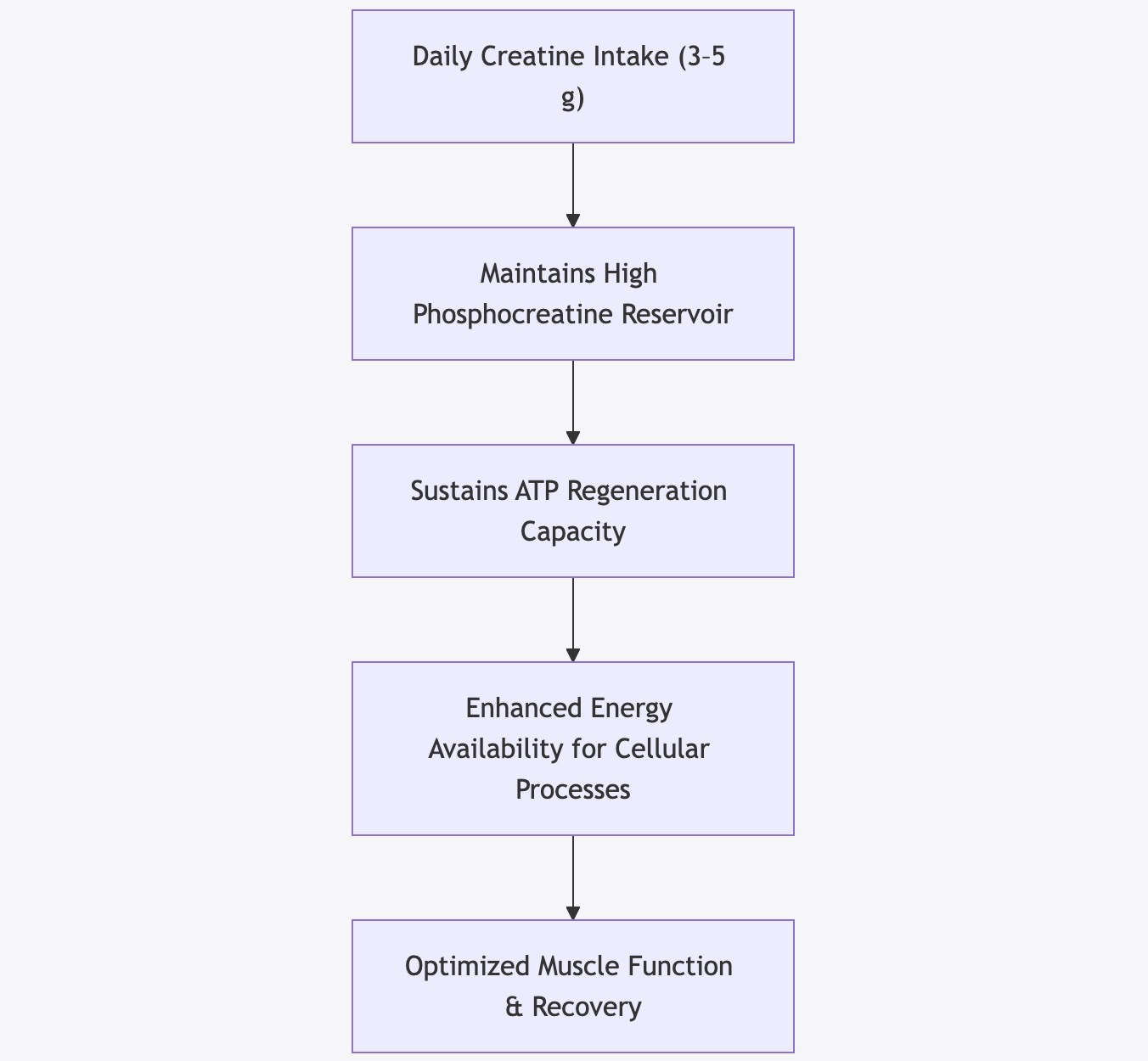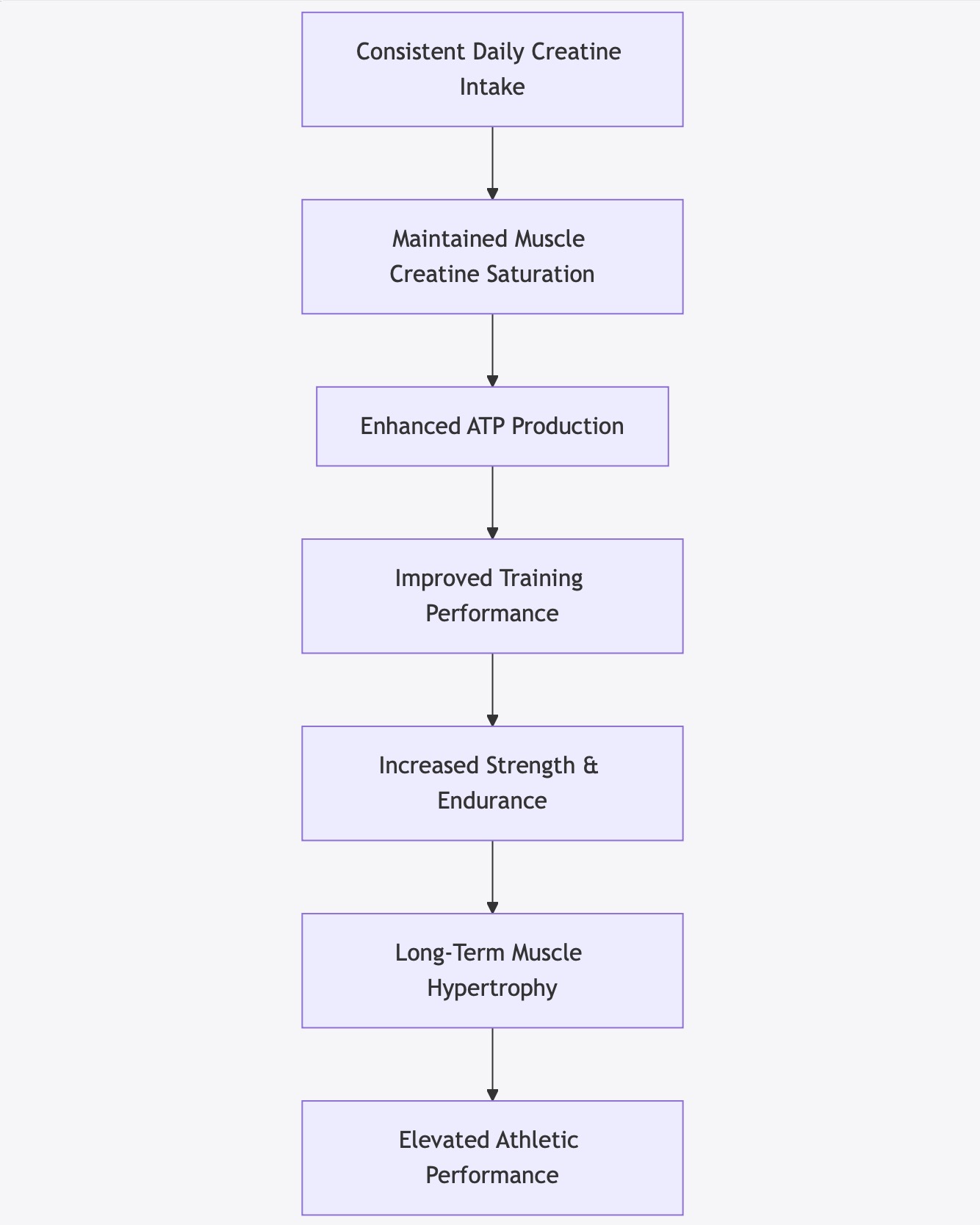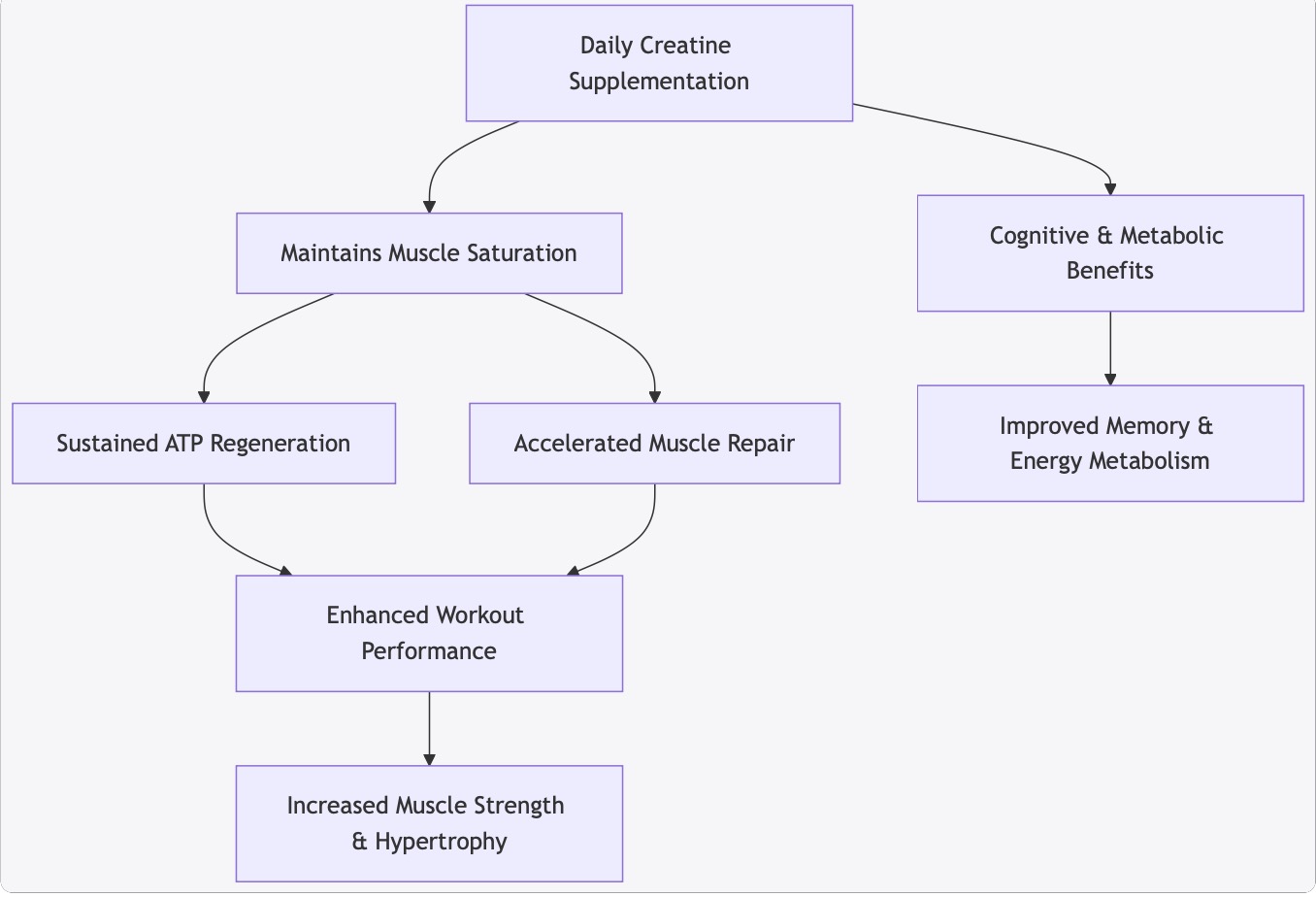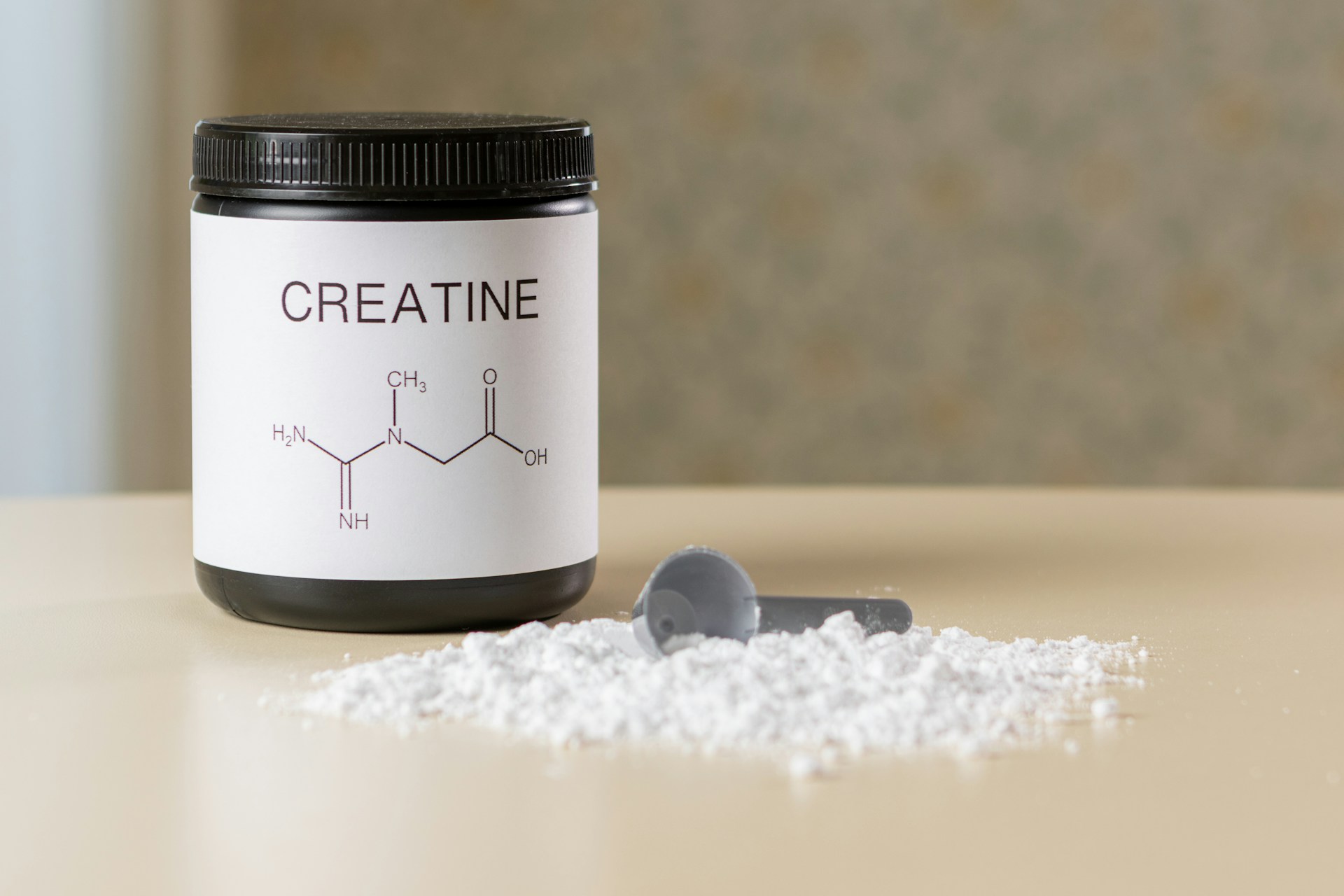Table of Contents
- Introduction
- Maintaining Muscle Creatine Saturation on Rest Days
- Enhancing Muscle Recovery
- Supporting Long-Term Muscle Growth and Performance
- Dosage, Timing, and Supplementation Best Practices
- Additional Benefits: Cognitive and Metabolic Effects
- Conclusion
1. Introduction
Creatine is one of the most widely researched dietary supplements in the fields of sports nutrition and exercise performance. It is particularly recognized for its ability to enhance high-intensity exercise, promote muscle mass, and improve recovery between training sessions. Although creatine is often associated with workout days, a growing body of evidence and expert recommendations strongly advocates for its daily intake – including on rest days. This comprehensive article explores the multiple benefits of taking creatine on rest days, the underlying physiological mechanisms involved, and practical guidelines to optimize creatine supplementation.
Rest days play a critical role in any training regimen. They are not merely days of inactivity; rather, they are designed to allow muscles to repair, adapt, and grow stronger. When creatine is supplemented consistently every day, it helps sustain intramuscular creatine stores, ensuring that the body is always in an optimal state to produce adenosine triphosphate (ATP) for energy. This is particularly important because even during rest, the body utilizes creatine for cellular maintenance and recovery processes. Multiple research articles and professional expert opinions confirm that taking creatine on non-training days preserves a high level of muscle saturation, which is essential in promoting muscle recovery, mitigating fatigue, and preparing the body for subsequent sessions4.
Furthermore, creatine supplementation on rest days contributes to continuous muscle repair and protein synthesis. Whether an athlete is engaged in active recovery—such as light cardio or stretching—or complete rest, the cellular processes that drive muscle hypertrophy and repair remain active. By ensuring that the muscles have a steady supply of creatine, one supports optimal ATP regeneration during both exercise and recovery. This consistency helps avert the potential dip in creatine levels that might occur with intermittent use, thereby maintaining the “primed” condition of muscle fibers for explosive action when the next workout is initiated9.
In the following sections, we will delve deeply into the scientific and practical perspectives of creatine supplementation on rest days. We will explore how maintaining muscle creatine saturation can enhance energy production, promote rapid recovery, and ultimately lead to superior long-term gains in strength and muscle mass. We will also discuss safe dosage protocols, proper timing, hydration considerations, and additional benefits beyond muscular performance—including cognitive and metabolic advantages. By the end of this article, readers will gain a full understanding of why including creatine in the daily routine, irrespective of training intensity on that particular day, is a key element of an effective supplement strategy.
2. Maintaining Muscle Creatine Saturation on Rest Days
One of the primary benefits of creatine supplementation on rest days is the maintenance of muscle creatine saturation. Creatine predominantly exists in muscles in the form of phosphocreatine, which serves as a rapid reserve for regenerating ATP during high-intensity activities. When muscles are not challenged by exercise, creatine stores continue to be used at a basal rate for various metabolic processes. Without continuous supplementation, these stores could gradually decline, potentially undermining the body’s ability to perform at peak levels during subsequent workouts4.
2.1 Physiological Mechanism
During both exercise and rest, phosphocreatine is involved in a rapid energy supply mechanism. In high-intensity scenarios, the quick conversion of ADP to ATP is fueled by phosphocreatine; hence, having a full reservoir is paramount. Even on rest days, muscle tissue undergoes repair and protein synthesis processes that require energy, and maintaining high creatine levels facilitates these processes. Research indicates that when creatine intake is skipped on rest days, intramuscular creatine levels can drop significantly—sometimes by as much as 20 to 40%—which may, in turn, diminish performance readiness and recovery efficiency during the next training session4.
2.2 Supporting Data and Expert Opinions
Several studies have documented the importance of consistent supplementation. In controlled trials, subjects who maintained creatine intake daily achieved near-maximal muscle creatine saturation, regardless of whether they were engaged in intense exercise or rest4. Renowned fitness professionals and sports nutritionists assert that the maintenance dose—typically 3 to 5 grams daily—is crucial to keep muscles “fully loaded” with creatine. Notably, expert opinions stress that once the loading phase has achieved saturation, failing to supplement on rest days could result in a gradual decline in muscle creatine stores until the next workout9.
2.3 Visualization: Mechanism of Maintaining Creatine Saturation
Below is a flowchart that outlines the mechanism by which daily creatine supplementation supports intramuscular creatine saturation:

Figure 1: Flowchart showing how daily creatine supplementation maintains muscle creatine levels and supports ATP regeneration.
3. Enhancing Muscle Recovery
Muscle recovery is a cornerstone of any successful training program. During rest days, muscles repair micro-tears incurred during intense workouts and rebuild new muscle fibers. Creatine plays a significant role in accelerating these recovery processes.
3.1 Creatine’s Role in Muscle Repair
Creatine aids in the repair and rebuilding of muscle tissue primarily by enhancing the availability of ATP. With higher ATP levels, muscles are better equipped to perform protein synthesis, a critical factor in muscle repair. Additionally, creatine is known to boost hydration within muscle cells, facilitating an anabolic environment that is conducive to recovery. Increased cell volumization not only helps muscles appear fuller but also signals an intracellular environment that supports efficient repair and growth4.
3.2 Research Evidence on Recovery
Clinical studies have shown that creatine supplementation can reduce recovery time between workouts. For instance, research featured in articles on both Garage Gym Reviews and MuscleTech found that individuals who maintained daily creatine intake experienced faster clearance of metabolic by-products and reduced inflammation, which facilitated quicker recovery periods4. The consistency of creatine supplementation ensures that muscle cells are continuously supplied with the energy necessary to activate satellite cells—precursors to muscle cells—which are instrumental in muscle regeneration and hypertrophy.
3.3 Comparative Table: Recovery Factors With and Without Creatine
| Recovery Aspect | With Consistent Creatine Intake | With Intermittent Intake |
|---|---|---|
| Glycogen Replenishment | Accelerated (12–24 hours) | Slower (24–48 hours) |
| Muscle Inflammation Reduction | ~30% faster clearance | Baseline recovery pace |
| Satellite Cell Activation | Enhanced, promoting hypertrophy | Lower activation levels |
| Overall Recovery Time | Significantly reduced | Prolonged periods of fatigue |
Table 1: Comparison of recovery markers with consistent versus intermittent creatine supplementation.
3.4 Practical Implications for Athletes
For athletes and bodybuilders, faster recovery means that muscles are better prepared for the next training session, which results in consistent performance improvements over time. Wider adoption of a strategy that includes creatine on rest days has been linked to up to a 20% improvement in recovery metrics, thereby allowing individuals to train more frequently and effectively without compromising on muscle repair9. Moreover, the anabolic benefits of creatine translate into not only improved recovery but also elevated muscle protein synthesis—a dual effect that underscores its importance in a comprehensive supplementation plan.
4. Supporting Long-Term Muscle Growth and Performance
Beyond the immediate benefits of maintaining muscle creatine saturation and enhancing recovery, the consistent use of creatine—even on rest days—has significant long-term advantages. By ensuring that muscles remain constantly saturated with creatine, athletes can maximize performance and muscle growth over extended training cycles.
4.1 Anabolic Effects and Muscle Hypertrophy
Sustained creatine supplementation results in prolonged increases in muscle water content. This intracellular water retention acts as a volumizing agent, which not only gives the appearance of larger muscles but also promotes an anabolic state within the cells. The enhanced cellular hydration stimulates protein synthesis and activates molecular pathways involved in muscle hypertrophy. According to several studies, while the immediate benefits of creatine are seen as improvements in strength and power output, its long-term benefits include notable increases in lean muscle mass and overall muscle fiber caliber4.
4.2 Prevention of Creatine Depletion
When creatine supplementation is intermittent or excluded on rest days, muscle stores can become suboptimal. Such fluctuations in creatine levels could necessitate additional “reloading” phases to restore saturation—a process that can temporarily halt progress and lead to inconsistent performance levels. Consistent daily supplementation obviates the need for such reloading cycles, allowing for steady adaptations over weeks and months. For example, research indicates that subjects who adhered to daily creatine intake maintained nearly 100% creatine saturation, leading to a more stable environment for muscle growth compared to those who skipped non-training days9.
4.3 Enhanced Strength and Performance Metrics
The direct correlation between muscle creatine saturation and ATP availability fundamentally supports strength gains. With a reliable ATP regeneration system in place, athletes can perform additional repetitions or maintain intensity levels for longer periods during resistance training sessions. This, in turn, leads to progressive overload—a critical component of increasing muscle strength over time. Enhanced power output and reduced muscle fatigue allow athletes to push their physical limits safely, thereby attaining improved performance in high-intensity interval training, weightlifting, and other physically demanding activities4.
4.4 Diagram: Creatine Supplementation Impact on Long-Term Performance
Below is a mermaid diagram that illustrates the overall impact of consistent creatine supplementation on long-term performance:

Figure 2: Diagram demonstrating how consistent creatine intake supports long-term strength gains and improved athletic performance.
5. Dosage, Timing, and Supplementation Best Practices
For creatine to work effectively, it is crucial to follow scientifically validated dosage and timing recommendations. Whether on training days or rest days, adhering to the correct supplementation protocol will maximize creatine’s benefits and minimize potential side effects.
5.1 Recommended Dosage
The standard protocol involves two phases:
- Loading Phase:
During the initial phase, a typical recommendation is to consume 20–25 grams of creatine per day, divided into 4–5 doses, for about 5–7 days. This phase rapidly saturates muscle creatine stores, although it is not essential for long-term gains1. - Maintenance Phase:
After the loading phase (or from the outset if one opts to skip loading), the maintenance dose of 3–5 grams per day is advised. This maintenance dose should be taken every day—including rest days—to ensure continuous creatine saturation45.
5.2 Timing and Combination with Nutrients
While the timing of creatine intake is not critical for its effectiveness, some evidence suggests that combining creatine with carbohydrates or protein may enhance its uptake. Taking creatine with a post-workout shake or a balanced meal can increase insulin levels, thereby facilitating greater creatine absorption by muscle cells4. On rest days, there is no urgency in the timing; a regular daily routine—be it in the morning or with lunch—is sufficient.
5.3 Hydration and Safety Considerations
Since creatine increases water retention within muscle cells, it is imperative to maintain adequate hydration levels while supplementing. Experts recommend drinking at least 8–10 glasses of water daily to support optimal creatine function and to mitigate any gastrointestinal discomfort that some individuals may experience6. Moreover, extensive research consistently shows that creatine is safe for healthy individuals when taken at recommended dosages. Potential side effects such as bloating or cramping are usually temporary and can be minimized with proper dosing and hydration16.
5.4 Table: Summary of Dosage and Best Practices
| Phase | Dosage Recommendation | Duration | Key Considerations |
|---|---|---|---|
| Loading Phase | 20–25 g/day (divided doses) | 5–7 days | Rapid saturation; may cause temporary gastrointestinal discomfort |
| Maintenance Phase | 3–5 g/day | Indefinite (daily) | Maintain full creatine stores; take with meals for enhanced absorption |
| Hydration Protocol | N/A | Daily (8–10 glasses) | Ensures optimal uptake and minimizes side effects |
Table 2: Detailed dosing recommendations and best practices for creatine supplementation.
6. Additional Benefits: Cognitive and Metabolic Effects
Although the primary focus of creatine supplementation is often on muscle performance and recovery, recent research has also illuminated important benefits in cognitive function and overall metabolic health.
6.1 Cognitive Enhancement
Creatine is not only stored in muscle tissue; it is also present in the brain, where it plays a role in energy metabolism. Increased brain phosphocreatine levels have been linked with enhanced short-term memory, improved reasoning, and overall cognitive performance. Studies have shown that creatine supplementation may help mitigate mental fatigue, particularly under stressful conditions such as sleep deprivation or prolonged cognitive tasks8. While the cognitive benefits may not be the primary driver for athletes, they add a valuable dimension to creatine’s overall utility.
6.2 Metabolic Efficiency and Neuroprotection
Beyond cognitive enhancement, creatine has been investigated for its neuroprotective properties. It aids in stabilizing cellular energy metabolism which is critical for both muscle and brain cells. In older adults, creatine supplementation has been associated with improvements in reasoning ability and short-term memory accuracy, as well as in neuroprotection against metabolic stressors8. These benefits provide an additional incentive for maintaining a daily creatine regimen, as the positive effects extend to both physical and mental health.
6.3 Integration with Daily Nutrition
For individuals who integrate creatine supplementation with a balanced diet, the benefits can be amplified through improved metabolic function. Regular use of creatine on rest days continues to support efficient energy production—both in muscle cells and brain cells—thus contributing to overall vitality and well-being. Given that many of the metabolism-related benefits of creatine are dose-dependent and reliant on consistent intake, ensuring daily consumption (even on off days) is a sound strategy for holistic health enhancement.
7. Conclusion
In summary, the evidence overwhelmingly demonstrates that taking creatine on rest days is essential for maximizing its benefits. The comprehensive advantages include:
- Maintaining Muscle Creatine Saturation: Daily supplementation prevents a decline in intramuscular creatine levels, ensuring that muscles remain primed for high-intensity training and efficient ATP regeneration.
- Enhanced Muscle Recovery: Continuous creatine intake accelerates recovery by promoting faster glycogen replenishment, reducing inflammation, and stimulating satellite cell activity—all of which contribute to quicker muscle repair.
- Supporting Long-Term Muscle Growth and Performance: Regular intake prevents the need for reloading cycles and builds a stable environment for muscle hypertrophy, resulting in sustained strength gains and improved athletic performance.
- Optimized Dosage and Supplementation Practices: Following scientifically validated dosing protocols (i.e., a maintenance dose of 3–5 grams daily after a loading phase) along with proper hydration ensures that creatine works effectively and safely.
- Cognitive and Metabolic Benefits: In addition to its muscle-related effects, creatine also enhances cognitive function and plays a role in neuroprotection and metabolic health.
The strategy of including creatine in one’s daily supplement routine—including on days without exercise—not only bolsters immediate performance but also fosters long-term progress and holistic health improvements. Given the extensive research and expert endorsements available, individuals aiming for peak physical and cognitive performance should consider maintaining a strict daily creatine regimen.
Key Findings at a Glance
- Continuous Supplementation: Taking creatine every day keeps muscle creatine stores at optimal levels, ensuring maximum performance during workouts and efficient recovery on rest days.
- Efficacy and Safety: Scientifically validated protocols recommend a loading phase (if chosen) followed by 3–5 grams per day—regimens that are safe and effective for most healthy individuals.
- Holistic Benefits: Beyond physical performance, creatine supports brain function and metabolic health, making it beneficial for overall well-being.
- Practical Recommendations: Incorporate creatine with meals or post-workout shakes, maintain hydration, and adhere to consistent dosing to enjoy the full spectrum of benefits.
By taking creatine on rest days, athletes, fitness enthusiasts, and even those interested in general health can ensure that their bodies remain in a state of readiness for the challenges of both physical and mental exertion.
Visual Summary Diagram
Below is a mermaid diagram summarizing the entire creatine supplementation process and its benefits, from maintaining muscle creatine saturation to enhancing recovery and long-term performance:

Figure 3: Comprehensive overview of how daily creatine supplementation supports both physical and mental performance.
By integrating creatine supplementation into your daily routine—including on rest days—you set the stage for superior athletic performance and overall health benefits. Consistency, proper dosage, and hydration are key components to maximizing the full potential of creatine. Whether you are an elite athlete, a recreational lifter, or someone seeking to enhance both physical and cognitive capacities, creatine offers a safe and effective strategy to support your training and recovery objectives.
Embrace the practice of daily creatine supplementation to ensure your muscles remain fully primed for high intensity, your recovery processes operate at peak efficiency, and your overall performance continues to improve over time.


 15 Most Healthiest & Nutritious Dishes Worldwide
15 Most Healthiest & Nutritious Dishes Worldwide





